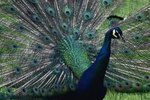
Canaries, birds known for both beauty and song, have been popular pets for many centuries. Hundreds of different canary breeds exist throughout the world, all of which can be classified into three distinct types; song canaries, type canaries and color canaries. Some canaries have been bred to be great singers, while others have been bred to have certain markings and shapes or certain colors.
Canary History
All the varieties of canaries originate from the wild canary, Serinus serinus, of the Canary Islands. These beautiful, singing birds were known to the Romans and then rediscovered by the French in 1334, after which captured birds began appearing in other countries. Original canaries were green with hints of grey and yellow, very different from the yellows and oranges popular today. Current shades and color arrangements vary exceedingly.
Song Canaries
The most famous of canaries is the song canary. They are bred specifically for their song. Rollers, waterslagers, American singers and timbrados are the best known song canary breeds. Usually, male canaries sing the best, always trying to impress the females. Song canaries can imitate other birds and music, thus incorporating the sounds into their own song. The most renowned song canary is the Hartz roller canary, emitting a soft tone from the throat with a nearly closed beak.
Type Canaries
Type canary breeders concentrate on shape, stance and other physical characteristics. Well-known type canary breeds include the Fife, border and Gloster canaries. Nearly no attention is paid to the quality of song produced from these birds. Type canaries can be tall or short, fat or skinny and may have smooth or frilled feathers. For example, the Scotch fancy canary sits in an unnaturally bent posture, while the northern Dutch frill has long swooped feathers.
Color Canaries
Color canaries are bred into all colors, except true blues or black. Breeding canaries for color is derived from two color elements: melanin and lipochrome. Melanin color includes dark hues of black and brown, while lipochrome color includes yellow, white and red. The typical yellow bird has been selectively bred without melanin pigmentation. Combined during breeding, melanin and lipochrome create colors of green, blue, bronze, cinnamon, fawn and brown. Additionally, colors may be enhanced by feeding colored foods.
Mules
A female canary bred to a male finch results in a mule canary. Often, these offspring will be infertile. Examples of these breedings are called the goldfinch mule, siskin mule or greenfinch mule. A male canary bred with a female finch is known as a bull. Mules have singing ability and can be exhibited at shows.
References
Photo Credits
-
Hemera Technologies/AbleStock.com/Getty Images
Writer Bio
Based in Michigan, Keri Gardner has been writing scientific journal articles since 1998. Her articles have appeared in such journals as "Disability and Rehabilitation" and "Journal of Orthopaedic Research." She holds a Master of Science in comparative medicine and integrative biology from Michigan State University.



